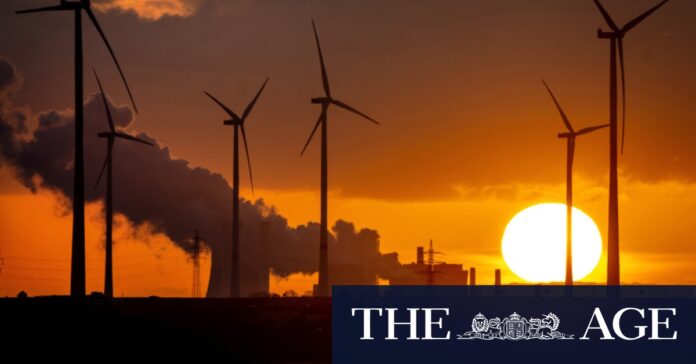[ad_1]
In positive signs for the market, central banks have most likely hit their peak interest rates (with the Federal Reserve indicating it could begin cutting the cash rate from March), inflation is easing and the rise of artificial intelligence is likely to continue boosting the value of the tech sector.
Loading
On the flipside, inflation remains high, the risk of recession is pronounced, the Chinese economy and the property sector continue to pose a threat. There are multiple elections around the world threatening to exacerbate geopolitical tensions – not to mention the ongoing wars in Ukraine and Gaza.
According to AMP chief economist Shane Oliver, “global growth in 2024 is likely to be around 2.5 per cent, down from around 3 per cent in 2023, but not disastrous – with weakness in the first half and stronger conditions in the second half going into 2025”.
“In Australia, growth is expected to slow to 1.5 per cent in the year ahead with very weak, possibly mild recession conditions in the first half but stronger conditions later. Inflation is expected to fall to 3 per cent in Australia,” he said.
ANZ Private chief investment officer Lakshman Anantakrishnan said the resilience of most markets around the world had been “a bit of a surprise” given the economic and political conditions, and that he was expecting the bonds market to outperform equities next year as central banks begin cutting interest rates.
“There’s still an ongoing impact of the massive fiscal stimulus [from COVID-19] that has kept consumption up and unemployment low, which has helped the market,” Anantakrishnan said. “Prior cycles, when we had a tightening of monetary policy, we didn’t have huge levels of fiscal stimulus too, and that has certainly benefited.”
JP Morgan’s executive director of global market strategists, Kerry Craig, does not believe the Australian sharemarket will replicate next year’s highs in the US, but he remains optimistic about the economy and market.
“The current earnings expectations are very, very low, but I think you’re seeing those revisions start to rise higher, and then we can start to see those earnings growth numbers move higher [next year],” Craig says. “Whereas in the US, I think you’d likely see those earnings numbers lower.”
Analysts are expecting to see a continued boom in tech stocks next year, as well as real estate investment trusts on the back of falling interest rates and the healthcare sector due to our ageing population.
The verdict on the Reserve Bank raising rates is mixed: Craig does not expect further increases next year, but Stats believes the RBA will lift the cash rate once more. But there is widespread belief that governor Michelle Bullock will cut rates some time from late 2024 to early 2025.
The impact of the federal government’s stage 3 tax cuts, which will begin next year, will also be closely watched to determine whether they push up inflation, according to CommSec senior economist Ryan Felsman.
Felsman is forecasting the ASX 200 to be between 7300 and 7600 points, and that most of the growth will occur in the second half of the year. The local bourse on Friday closed 7442.7 points.
[ad_2]
Source link



